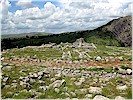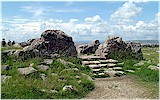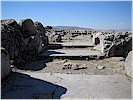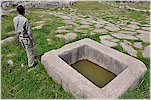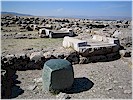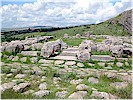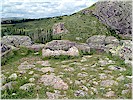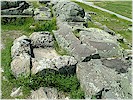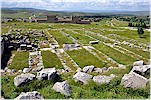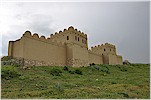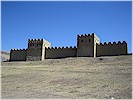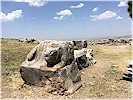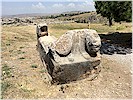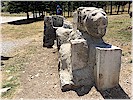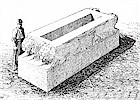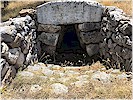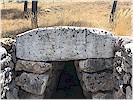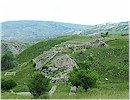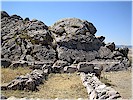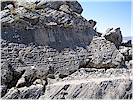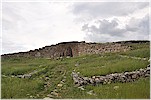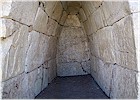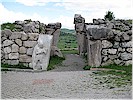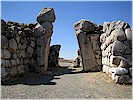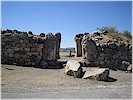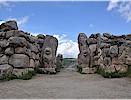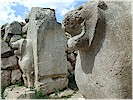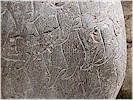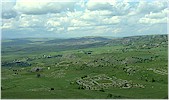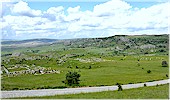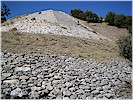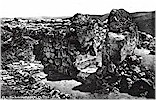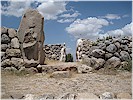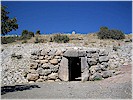Türkçe
Boğazköy (Hattua)
Hattua was the main city of the Hittite state from their beginning in the 17th century BCE until the collapse of the state in the early 12th century BCE. By the 12th century the city was covering an area of 182 hectares which was surrounded by a 3.3 km long defensive wall. The first westerner to visit and write about the city ruins was Charles Texier in 1834, but it was only in the 1880s that Archibald Sayce and William Wright identified the city as the Hittite capital. The first proper excavations were made by Hugo Winckler and Theodor Makridi in 1906, and since 1931 the city has been under almost continuous excavation by the German Archeological Institute under Kurt Bittel, Peter Neve, Jürgen Seeher, and currently Andreas Schachner. Other than the numerous monumental structures and artifacts, the excavations revealed over 30 thousand tablet fragments which were part of the Hittite royal archives.
Click on the pictures for larger images.
Great Temple
It is the largest of over 30 temples found in the city and was probably dedicated mainly to the top two deities of the Hittite pantheon, the Storm-god of Hatti and the Sun-goddess of Arinna, whose statues must once have been placed in the two northern rooms of the inner temple building. Main temple building was surrounded by numerous rooms of administrative and utility facilities. Today only the stone foundations are visible. The walls above those were made of mud brick and wood.
Around the Great Temple: City Walls, Lion Basin, and Quellgrotte (Fountain-Cave)
In 2003-2005 a section of the city walls were reconstucted using original methods and materials to give visitors and idea about how it once looked.
The remains of a stone basin, decorated with four crouching lions on each corner, was found a little south of the main gate of the temple complex. It was carved from a single 5.5 m long limestone block . Whether it served as a water basin or base for another monument remains unclear.
To the south of the temple complex is a small grotto, the so-called Quellgrotto, with steps descending into a stone dooorway. Inside is a water spring. The lintel above its door is a replica of the original in the Boğazkale Museum, which bears wornout reliefs of human figures. A nearby-found inscribed stele (BOĞAZKÖY 12) may suggest that the spring had cultic significance.
Büyükkale, Nişantepe and Nişantaş
Büyükkale is the hill where the palace complex was located. Today only the stone foundations of the vast building complex is visible. To the southwest of Büyükkale, the small hill accross the modern day road is called Nişantepe, where several sculpted works had been found. On the rocky hillside facing Büyükkale is the large inscribed monument of the last king of the Hittite Empire called Nişantaş.
Sacred pool complex chambers
Two domed chambers were built into the western (Chamber I) and northern (Chamber II) corners of the embankments of the water reservoir called Eastern Ponds. The better preserved Chamber II has two reliefs, one on the wall accross the entrance and another on the left wall, both probably representing the Hittite king Suppiluliuma II, whose name is written (BOĞAZKÖY 20) next to the relief on the left. On the right is a lenghty inscription of the same king (BOĞAZKÖY 21) which relates his successful military campaigns.
King's Gate and Lion Gate
King's Gate and Lion Gate are two of the entry ways of the city located on the on the eastern and western side of the walls respectively. A high relief of a male warrior figure is carved on a limestone block at the north flank of the inner doorway of the King's Gate. In early years, the relief was thought to be of a king, after which the gate was named. However, the horns on the head piece and naked feet suggest that the figure represents a god. The relief is about 2.35 meters high. The original relief has been cut off and moved to Ankara Museum and a replica was installed at its place. Lion Gate gets its name from the pair of lions guarding the outer doorway of the gate. Broken head of the left hand lion has been replicated from its counterpart.
Upper Town
The souther part of the city is called Upper Town due to its higher elevation. It is mostly covered with the foundations of numerous temples.
Yerkapı, the Sphix Gate and the Postern Tunnel
The high ramparts that cover the southern section of the city walls are referred to as Yerkapı. At the top of the walls is the so-called Sphinx gate on account of the two pairs of sphinx statues that flank its inner and outer doorways. Both sphinxes of the inner facing doorway are made of a reddish limestone and have been found in heavily fragmented condition. The east flank sphinx shown below was originally taken to Berlin for repairs and had been on display in the Pergamon Museum until 2012 when it was returned to Turkey. The west side sphinx had also been moved to the Istanbul Museum. Today the originals of both sphinxes are in the Boğazkale Museum and replicas are installed at their original locations. At the outer facing doorway only the west side sphinx survives, albeit heavily damaged. Below the ramparts is a lengthy postern tunnel that provides a shortcut in and out of the city.
Hieroglyphic inscriptions
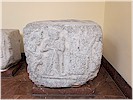
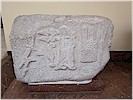
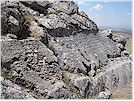

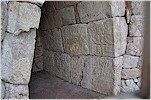




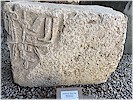
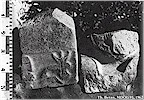






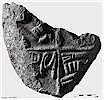
Hieroglyphic graffiti
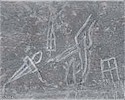

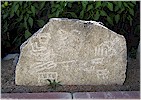
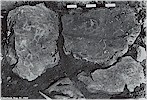


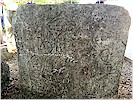
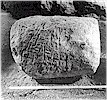
Yazılıkaya






